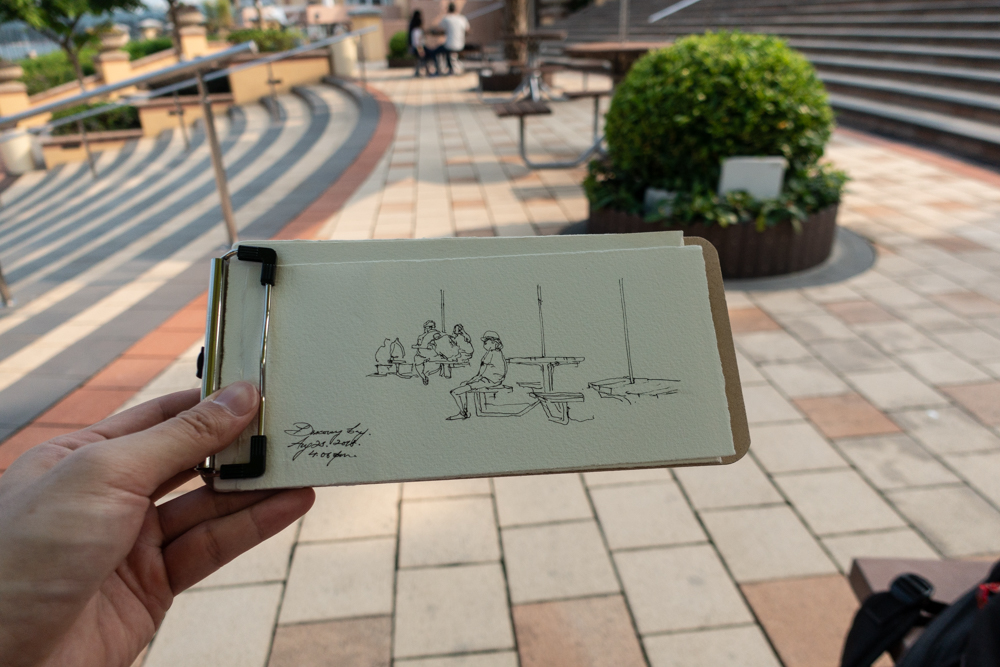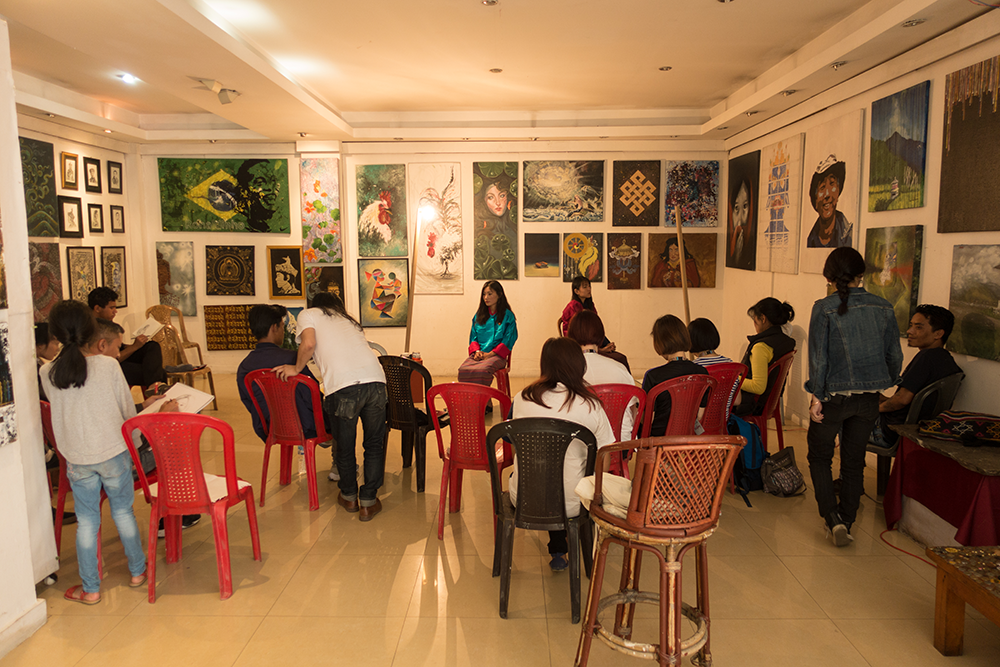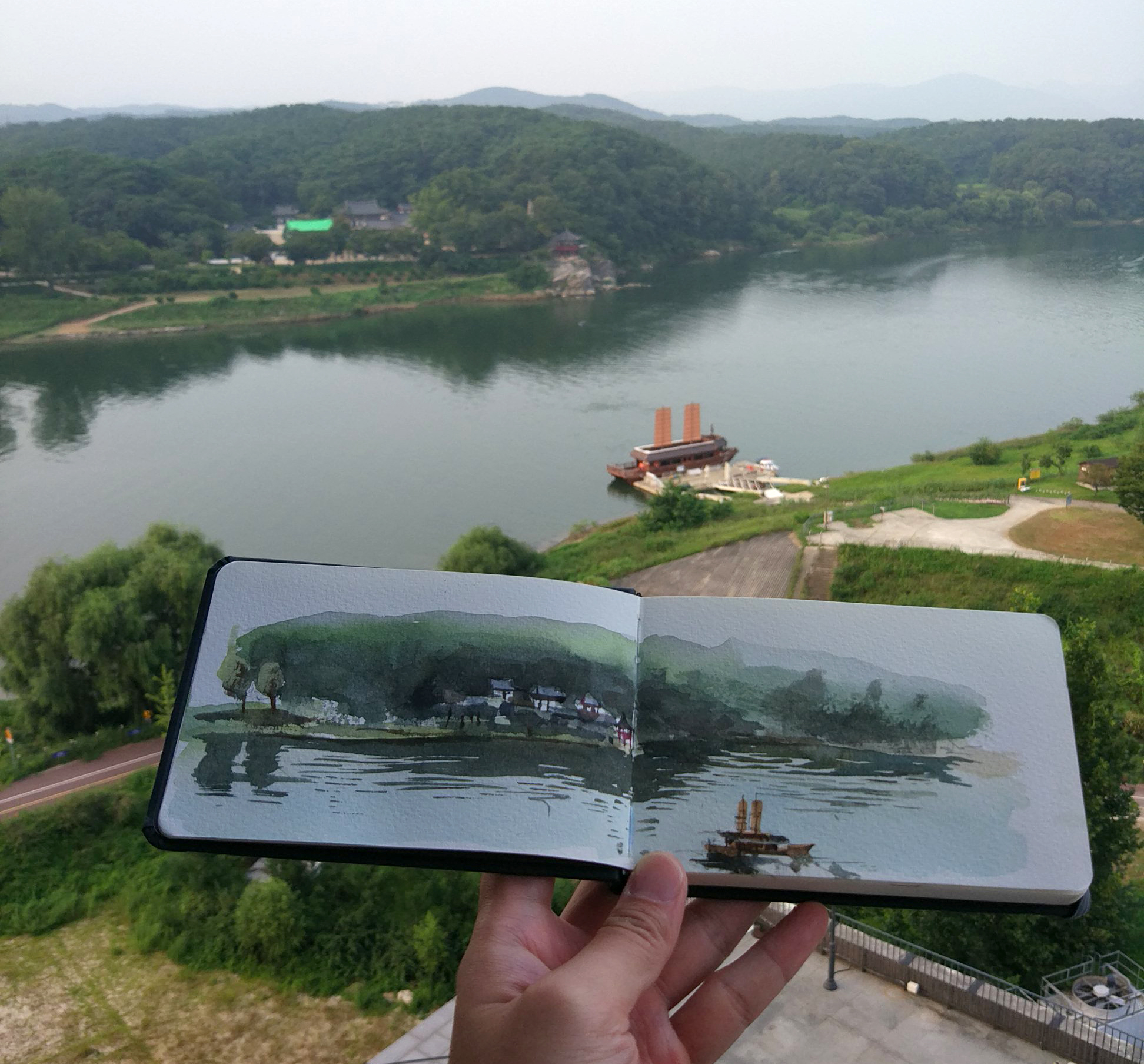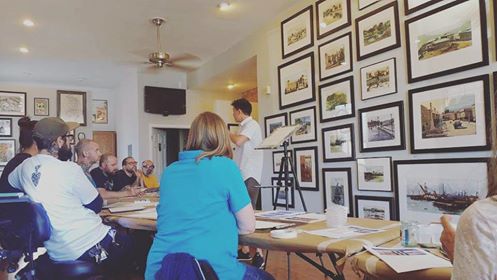Day 2 -
My sleep quality took a nosedive. I found myself back in the metaphorical boxing ring, and on this particular day, we honed in on our breathing sensations, focusing from the area around our nostrils to the upper lips. Strangely, my monkey mind decided to take a break. Instead, when I achieved moments of calmness and focus, my mind would seamlessly drift into a subconscious or light non-REM sleep state. Describing this transition proves challenging due to its smooth and elusive nature.
Frustrations mounted as I questioned why my willpower seemed incapable of aligning with my intentions. During one episode, I slipped into my subconscious, realizing I was in a dream state with vivid imagery of stirring a spoon in a cup. Upon waking, I discovered that my physical hand had mirrored the dream motion. The experience was undeniably trippy.
By day's end, a slight headache had set in, and I struggled to find rest at night. Even when it felt like I had drifted into sleep, my alertness persisted. It's akin to the sensation of experiencing super-long and slow breaths during sleep, with an added layer of vigilance to each inhalation. The roles of my conscious and subconscious mind seemed to have mysteriously flipped.
Day 3 -
I awoke with barely any sleep, feeling incredibly fatigued but oddly not sleepy. The day's meditation instruction directed us to focus on the sensation around our upper lips. However, my experience took an unexpected turn as I found myself repeatedly drifting into my subconscious, feeling like things had gone haywire. Seeking guidance, I approached the teacher, who advised taking breaks, washing up, and resisting these mental intrusions. Despite my willpower being on full throttle, exercising control proved elusive.
When I inquired about my sleep deprivation, the teacher nonchalantly mentioned that meditators don't need much sleep and urged me not to worry. Frustration mounted as I struggled to stay awake during meditation, often dozing off within minutes. In one instance, I found myself walking a dog in a dream, only to realize upon awakening that my subconscious was steering the ship. Behind me, another participant displayed equal frustration, resorting to repeatedly hitting his head when nodding off. I yearned to connect with him, but later discovered he had left the retreat, discreetly facilitated by the management to avoid influencing others to quit. This observation hinted at manipulative and psychological factors embedded in the design of the retreat.
Day 4 -
We concluded the Anapana phase, marking the official commencement of Vipassana meditation. According to Goenka, the initial three days served as preparation for our 'mental surgery.' The core concepts were straightforward:
We had lost touch with the subtle vibrations occurring within our changing form, referred to as Chi, chakra, or sensations in the context of Vipassana. Goenka asserted that Buddha traced suffering back to our attachments to pleasures and aversions, prescribing equanimity as the solution.
Through meditation, we sought to recondition ourselves to feel these sensations.
Avoiding labels for these sensations was crucial, as attaching labels equated to fully developed concepts, fostering attachment.
Once we could feel these sensations throughout our body, the directive was to observe them without labeling as good or bad—an analogy to accepting our ever-changing realities.
A pivotal moment unfolded in my meditation today. We were tasked with three sittings, maintaining a pose without movement for an hour. This ritual aimed to awaken our senses and cleanse past misdeeds. Skeptical of my ability to sit still, I continued to grapple with my subconscious. Before lunch, a revelation struck—I had been projecting my breathing onto an imaginary self. This realization, that our self-image is revealed laterally inverted through a mirror, prompted contemplation on how harshly I treated my subconscious. It dawned on me that it was time to be kind to myself.
Returning to the meditation seat in the afternoon, I finally succeeded in meditating without falling asleep. Despite persistent pain throughout my body, my subconscious began cooperating. Later, we were guided to shift our focus to the top of our head, and though initially challenging to catch the accent, I mistakenly thought we were instructed to focus on the top of our hip. To my surprise, this adjustment induced a cooling sensation sweeping down to my hip, intensifying the experience. The day concluded on a positive note, with a sense of accomplishment, and I enjoyed a better night's sleep.
t.
Day 5 -
Today's practice involved sweeping the focus from the top of our head to the bottom of our feet, observing without reacting to the rising and dissipating sensations. Remarkably, I successfully felt these sensations, maintaining equanimity and not moving an inch during the three lock-down sessions, each lasting an hour. It marked my inaugural experience of mind over matter. The excruciating pain in my legs and back transformed into mere sensations that rose and passed away.
During one session, a mosquito landed on my finger, extracting a bunch of blood, yet all I perceived with closed eyes was a robust sensation. Without categorizing these sensations as pain or pleasure, I remained oblivious to what was happening until the session concluded. However, that night, I developed a severe headache. As I lay down to sleep, an intense pressure on my face persisted. Surrendering to the stretching pain, I somehow managed to fall asleep for a few hours. Unfortunately, these discomforting sensations during sleep continued and intensified over the subsequent days.
Day 6 -
The meditation continued smoothly, yet a lingering sense of unease pervaded my experience, and I couldn't identify the source. Was I inadvertently projecting my imagination into my practice, causing issues? Despite this uncertainty, I persevered with the meditation, following the escalating instructions to channel focus on the body.
At night, the persistent stretching sensation on my face returned, disrupting my ability to sleep. I could only manage a few hours of rest by lying on my back. The increasing asymmetry of this sensation alarmed me, and concerns about it being a potential warning sign of a stroke started to intensify.
Day 7 -
I came to the realization that, while scanning my body parts, I was still projecting imagery in my mind. Doubts about whether this was imagination crept in, prompting me to seek clarification from my teacher. He advised me not to look for sensations but to sense them. Expressing my confusion, I asked how one could know the location of the arm without imagining it first. In response, my teacher emphasized that if the eyeballs were moving during the practice, it was not the correct approach and might be contributing to my headache and stretching pain.
As an artist, I explained that it was challenging for me to prevent my eyeballs from moving in my mind while scanning from head to toe. This realization led me to understand that, no matter how hard I tried, it was impossible to stop my eyeballs from searching for a placement. Surprisingly, I wasn't frustrated; instead, I welcomed this insight, though I wished for relief from my persistent headache. The stretching sensation on my face intensified during the night when I relaxed my facial muscles, and I struggled with difficulty breathing.
Day 8 –
I made the decision to leave the retreat that day. Despite the teacher's insistence that the sensations I experienced were positive signs of past bad deeds being eradicated through Vipassana meditation, I couldn't shake the feeling of being in a cult. Another theory suggested by the teacher was that heightened sensitivity during Vipassana practice might reveal underlying medical issues, potentially signaling a stroke. Concerned about my health, I questioned whether completing the retreat was worth the risk.
Expressing my understanding of equanimity, I stood firm in my decision to leave. The teacher continued to insist that I was giving up, solidifying my belief that this environment had cult-like qualities. They reluctantly allowed me to pack up discreetly, instructing me to wait in my room until the other students were in the meditation hall to avoid drawing attention to my departure. I left with a cab at 1 pm, with Hiroshi, a fellow participant, joining me in breaking the noble silence.
We shared our experiences, laughed, and discussed the surreal nature of the retreat. Hiroshi, a scientist from Singapore, revealed that he had been silently suffering from bug stings, which I had mistaken for an air freshener. After parting ways, the cab took me to Kuantan Sentra Terminal, where I found my way to Kuantan city, checked into a hotel, and took a warm shower. Despite checking in, sleep eluded me that night.
The next morning, I decided to return to Singapore earlier than planned, enduring an unpleasant bus trip that took over 8 hours. The peculiar stretching sensation on my face persisted, prompting me to see a doctor upon reaching home. After checking my blood pressure and heart rate, the doctor prescribed sleeping pills, providing some relief as I finally managed to fall asleep at 11 pm after a restless night.



















































































































































